Standing Rigging (or ‘Name That Stay’)
Published by rigworks on november 19, 2019.
Question: When your riggers talk about standing rigging, they often use terms I don’t recognize. Can you break it down for me?
From the Rigger: Let’s play ‘Name that Stay’…
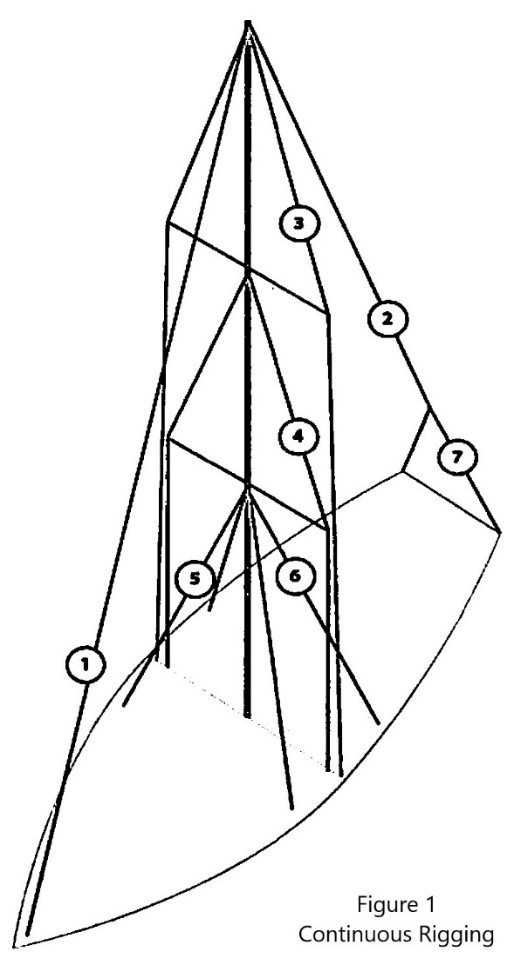
Forestay (1 or HS) – The forestay, or headstay, connects the mast to the front (bow) of the boat and keeps your mast from falling aft.
- Your forestay can be full length (masthead to deck) or fractional (1/8 to 1/4 from the top of the mast to the deck).
- Inner forestays, including staysail stays, solent stays and baby stays, connect to the mast below the main forestay and to the deck aft of the main forestay. Inner forestays allow you to hoist small inner headsails and/or provide additional stability to your rig.
Backstay (2 or BS) – The backstay runs from the mast to the back of the boat (transom) and is often adjustable to control forestay tension and the shape of the sails.
- A backstay can be either continuous (direct from mast to transom) or it may split in the lower section (7) with “legs” that ‘V’ out to the edges of the transom.
- Backstays often have hydraulic or manual tensioners built into them to increase forestay tension and bend the mast, which flattens your mainsail.
- Running backstays can be removable, adjustable, and provide additional support and tuning usually on fractional rigs. They run to the outer edges of the transom and are adjusted with each tack. The windward running back is in tension and the leeward is eased so as not to interfere with the boom and sails.
- Checkstays, useful on fractional rigs with bendy masts, are attached well below the backstay and provide aft tension to the mid panels of the mast to reduce mast bend and provide stabilization to reduce the mast from pumping.
Shrouds – Shrouds support the mast from side to side. Shrouds are either continuous or discontinuous .
Continuous rigging, common in production sailboats, means that each shroud (except the lowers) is a continuous piece of material that connects to the mast at some point, passes through the spreaders without terminating, and continues to the deck. There may be a number of continuous shrouds on your boat ( see Figure 1 ).
- Cap shrouds (3) , sometimes called uppers, extend from masthead to the chainplates at the deck.
- Intermediate shrouds (4) extend from mid-mast panel to deck.
- Lower shrouds extend from below the spreader-base to the chainplates. Fore- (5) and Aft-Lowers (6) connect to the deck either forward or aft of the cap shroud.
Discontinuous rigging, common on high performance sailboats, is a series of shorter lengths that terminate in tip cups at each spreader. The diameter of the wire/rod can be reduced in the upper sections where loads are lighter, reducing overall weight. These independent sections are referred to as V# and D# ( see Figure 2 ). For example, V1 is the lowest vertical shroud that extends from the deck to the outer tip of the first spreader. D1 is the lowest diagonal shroud that extends from the deck to the mast at the base of the first spreader. The highest section that extends from the upper spreader to the mast head may be labeled either V# or D#.
A sailboat’s standing rigging is generally built from wire rope, rod, or occasionally a super-strong synthetic fibered rope such as Dyneema ® , carbon fiber, kevlar or PBO.
- 1×19 316 grade stainless steel Wire Rope (1 group of 19 wires, very stiff with low stretch) is standard on most sailboats. Wire rope is sized/priced by its diameter which varies from boat to boat, 3/16” through 1/2″ being the most common range.
- 1×19 Compact Strand or Dyform wire, a more expensive alternative, is used to increase strength, reduce stretch, and minimize diameter on high performance boats such as catamarans. It is also the best alternative when replacing rod with wire.
- Rod rigging offers lower stretch, longer life expectancy, and higher breaking strength than wire. Unlike wire rope, rod is defined by its breaking strength, usually ranging from -10 to -40 (approx. 10k to 40k breaking strength), rather than diameter. So, for example, we refer to 7/16” wire (diameter) vs. -10 Rod (breaking strength).
- Composite Rigging is a popular option for racing boats. It offers comparable breaking strengths to wire and rod with a significant reduction in weight and often lower stretch.
Are your eyes crossing yet? This is probably enough for now, but stay tuned for our next ‘Ask the Rigger’. We will continue this discussion with some of the fittings/connections/hardware associated with your standing rigging.

Related Posts
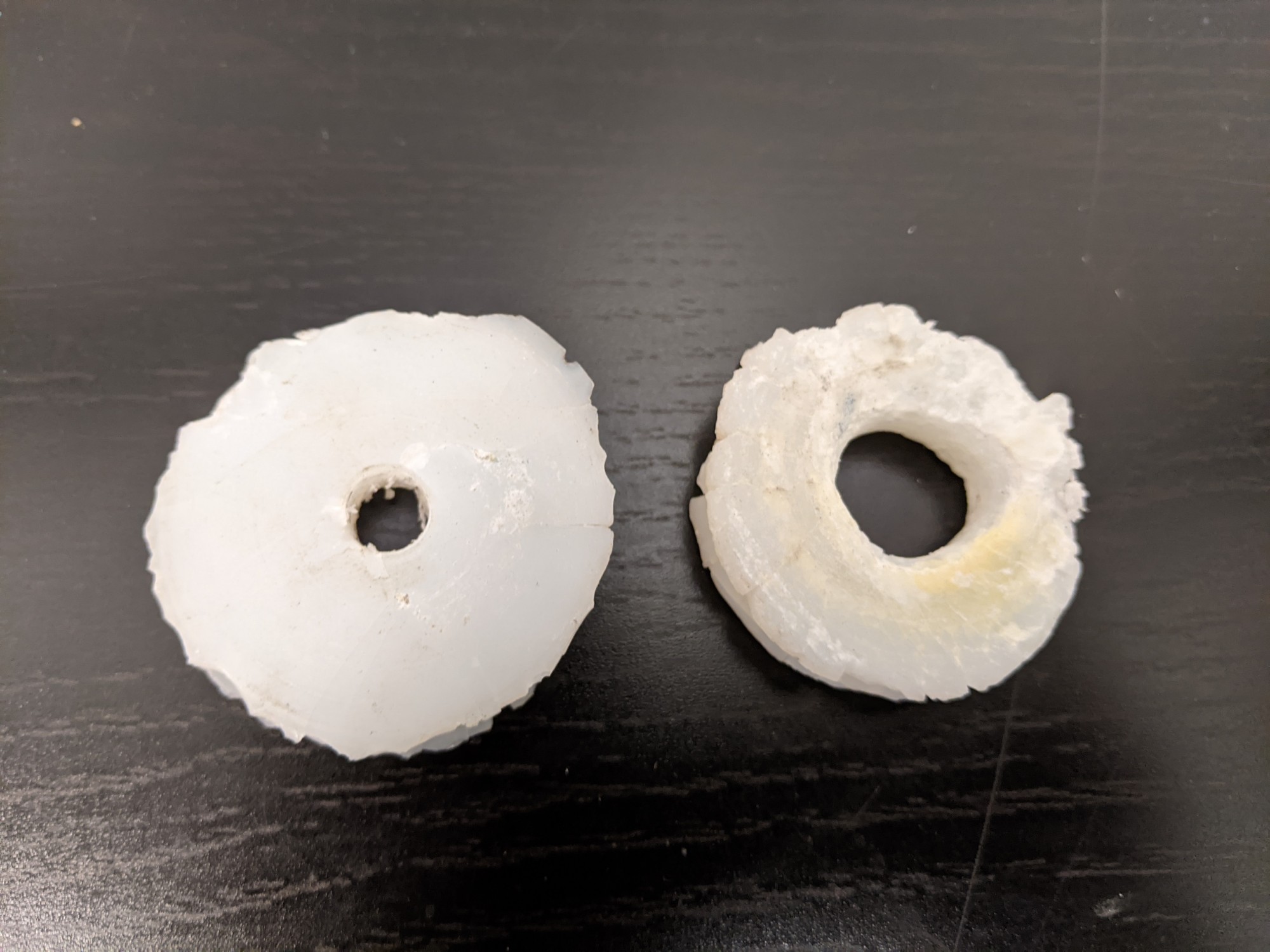
Ask the Rigger
Do your masthead sheaves need replacing.
Question: My halyard is binding. What’s up? From the Rigger: Most boat owners do not climb their masts regularly, but our riggers spend a lot of time up there. And they often find badly damaged Read more…
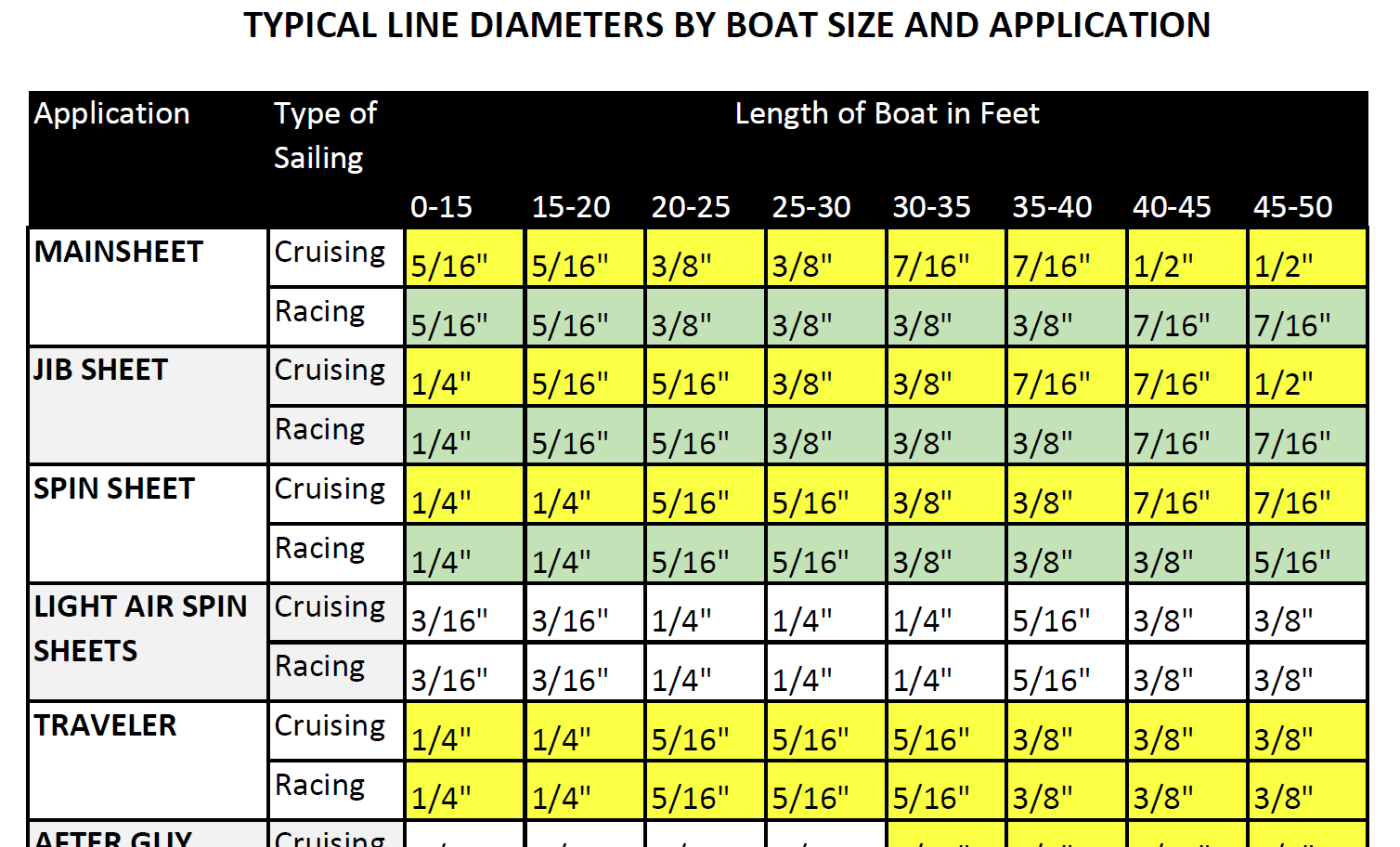
Selecting Rope – Length, Diameter, Type
Question: Do you have guidelines for selecting halyards, sheets, etc. for my sailboat? From the Rigger: First, if your old rope served its purpose but needs replacing, we recommend duplicating it as closely as possible Read more…

Spinlock Deckvest Maintenance
Question: What can I do to ensure that my Spinlock Deckvest is well-maintained and ready for the upcoming season? From the Rigger: We are so glad you asked! Deckvests need to be maintained so that Read more…
No products in the cart.
Sailing Ellidah is supported by our readers. Buying through our links may earn us an affiliate commission at no extra cost to you.
The Standing Rigging On A Sailboat Explained
The standing rigging on a sailboat is a system of stainless steel wires that holds the mast upright and supports the spars.
In this guide, I’ll explain the basics of a sailboat’s hardware and rigging, how it works, and why it is a fundamental and vital part of the vessel. We’ll look at the different parts of the rig, where they are located, and their function.
We will also peek at a couple of different types of rigs and their variations to determine their differences. In the end, I will explain some additional terms and answer some practical questions I often get asked.
But first off, it is essential to understand what standing rigging is and its purpose on a sailboat.
The purpose of the standing rigging
Like I said in the beginning, the standing rigging on a sailboat is a system of stainless steel wires that holds the mast upright and supports the spars. When sailing, the rig helps transfer wind forces from the sails to the boat’s structure. This is critical for maintaining the stability and performance of the vessel.
The rig can also consist of other materials, such as synthetic lines or steel rods, yet its purpose is the same. But more on that later.
Since the rig supports the mast, you’ll need to ensure that it is always in appropriate condition before taking your boat out to sea. Let me give you an example from a recent experience.
Dismasting horrors
I had a company inspect the entire rig on my sailboat while preparing for an Atlantic crossing. The rigger didn’t find any issues, but I decided to replace the rig anyway because of its unknown age. I wanted to do the job myself so I could learn how it is done correctly.
Not long after, we left Gibraltar and sailed through rough weather for eight days before arriving in Las Palmas. We were safe and sound and didn’t experience any issues. Unfortunately, several other boats arriving before us had suffered rig failures. They lost their masts and sails—a sorrowful sight but also a reminder of how vital the rigging is on a sailboat.
The most common types of rigging on a sailboat
The most commonly used rig type on modern sailing boats is the fore-and-aft Bermuda Sloop rig with one mast and just one headsail. Closely follows the Cutter rig and the Ketch rig. They all have a relatively simple rigging layout. Still, there are several variations and differences in how they are set up.
A sloop has a single mast, and the Ketch has one main mast and an additional shorter mizzen mast further aft. A Cutter rig is similar to the Bermuda Sloop with an additional cutter forestay, allowing it to fly two overlapping headsails.
You can learn more about the differences and the different types of sails they use in this guide. For now, we’ll focus on the Bermuda rig.
The difference between standing rigging and running rigging
Sometimes things can get confusing as some of our nautical terms are used for multiple items depending on the context. Let me clarify just briefly:
The rig or rigging on a sailboat is a common term for two parts:
- The standing rigging consists of wires supporting the mast on a sailboat and reinforcing the spars from the force of the sails when sailing.
- The running rigging consists of the halyards, sheets, and lines we use to hoist, lower, operate, and control the sails on a sailboat.
Check out my guide on running rigging here !
The difference between a fractional and a masthead rig
A Bermuda rig is split into two groups. The Masthead rig and the Fractional rig.
The Masthead rig has a forestay running from the bow to the top of the mast, and the spreaders point 90 degrees to the sides. A boat with a masthead rig typically carries a bigger overlapping headsail ( Genoa) and a smaller mainsail. Very typical on the Sloop, Ketch, and Cutter rigs.
A Fractional rig has forestays running from the bow to 1/4 – 1/8 from the top of the mast, and the spreaders are swept backward. A boat with a fractional rig also has the mast farther forward than a masthead rig, a bigger mainsail, and a smaller headsail, usually a Jib. Very typical on more performance-oriented sailboats.
There are exceptions in regards to the type of headsail, though. Many performance cruisers use a Genoa instead of a Jib , making the difference smaller.
Some people also fit an inner forestay, or a babystay, to allow flying a smaller staysail.
Explaining the parts and hardware of the standing rigging
The rigging on a sailing vessel relies on stays and shrouds in addition to many hardware parts to secure the mast properly. And we also have nautical terms for each of them. Since a system relies on every aspect of it to be in equally good condition, we want to familiarize ourselves with each part and understand its function.
Forestay and Backstay
The forestay is a wire that runs from the bow to the top of the mast. Some boats, like the Cutter rig, can have several additional inner forestays in different configurations.
The backstay is the wire that runs from the back of the boat to the top of the mast. Backstays have a tensioner, often hydraulic, to increase the tension when sailing upwind. Some rigs, like the Cutter, have running backstays and sometimes checkstays or runners, to support the rig.
The primary purpose of the forestay and backstay is to prevent the mast from moving fore and aft. The tensioner on the backstay also allows us to trim and tune the rig to get a better shape of the sails.
The shrouds are the wires or lines used on modern sailboats and yachts to support the mast from sideways motion.
There are usually four shrouds on each side of the vessel. They are connected to the side of the mast and run down to turnbuckles attached through toggles to the chainplates bolted on the deck.
- Cap shrouds run from the top of the mast to the deck, passing through the tips of the upper spreaders.
- Intermediate shrouds run from the lower part of the mast to the deck, passing through the lower set of spreaders.
- Lower shrouds are connected to the mast under the first spreader and run down to the deck – one fore and one aft on each side of the boat.
This configuration is called continuous rigging. We won’t go into the discontinuous rigging used on bigger boats in this guide, but if you are interested, you can read more about it here .
Shroud materials
Shrouds are usually made of 1 x 19 stainless steel wire. These wires are strong and relatively easy to install but are prone to stretch and corrosion to a certain degree. Another option is using stainless steel rods.
Rod rigging
Rod rigging has a stretch coefficient lower than wire but is more expensive and can be intricate to install. Alternatively, synthetic rigging is becoming more popular as it weighs less than wire and rods.
Synthetic rigging
Fibers like Dyneema and other aramids are lightweight and provide ultra-high tensile strength. However, they are expensive and much more vulnerable to chafing and UV damage than other options. In my opinion, they are best suited for racing and regatta-oriented sailboats.
Wire rigging
I recommend sticking to the classic 316-graded stainless steel wire rigging for cruising sailboats. It is also the most reasonable of the options. If you find yourself in trouble far from home, you are more likely to find replacement wire than another complex rigging type.
Relevant terms on sailboat rigging and hardware
The spreaders are the fins or wings that space the shrouds away from the mast. Most sailboats have at least one set, but some also have two or three. Once a vessel has more than three pairs of spreaders, we are probably talking about a big sailing yacht.
A turnbuckle is the fitting that connects the shrouds to the toggle and chainplate on the deck. These are adjustable, allowing you to tension the rig.
A chainplate is a metal plate bolted to a strong point on the deck or side of the hull. It is usually reinforced with a backing plate underneath to withstand the tension from the shrouds.
The term mast head should be distinct from the term masthead rigging. Out of context, the mast head is the top of the mast.
A toggle is a hardware fitting to connect the turnbuckles on the shrouds and the chainplate.
How tight should the standing rigging be?
It is essential to periodically check the tension of the standing rigging and make adjustments to ensure it is appropriately set. If the rig is too loose, it allows the mast to sway excessively, making the boat perform poorly.
You also risk applying a snatch load during a tack or a gybe which can damage the rig. On the other hand, if the standing rigging is too tight, it can strain the rig and the hull and lead to structural failure.
The standing rigging should be tightened enough to prevent the mast from bending sideways under any point of sail. If you can move the mast by pulling the cap shrouds by hand, the rigging is too loose and should be tensioned. Once the cap shrouds are tightened, follow up with the intermediates and finish with the lower shrouds. It is critical to tension the rig evenly on both sides.
The next you want to do is to take the boat out for a trip. Ensure that the mast isn’t bending over to the leeward side when you are sailing. A little movement in the leeward shrouds is normal, but they shouldn’t swing around. If the mast bends to the leeward side under load, the windward shrouds need to be tightened. Check the shrouds while sailing on both starboard and port tack.
Once the mast is in a column at any point of sail, your rigging should be tight and ready for action.
If you feel uncomfortable adjusting your rig, get a professional rigger to inspect and reset it.
How often should the standing rigging be replaced on a sailboat?
I asked the rigger who produced my new rig for Ellidah about how long I could expect my new rig to last, and he replied with the following:
The standing rigging should be replaced after 10 – 15 years, depending on how hard and often the boat has sailed. If it is well maintained and the vessel has sailed conservatively, it will probably last more than 20 years. However, corrosion or cracked strands indicate that the rig or parts are due for replacement regardless of age.
If you plan on doing extended offshore sailing and don’t know the age of your rig, I recommend replacing it even if it looks fine. This can be done without removing the mast from the boat while it is still in the water.
How much does it cost to replace the standing rigging?
The cost of replacing the standing rigging will vary greatly depending on the size of your boat and the location you get the job done. For my 41 feet sloop, I did most of the installation myself and paid approximately $4700 for the entire rig replacement.
Can Dyneema be used for standing rigging?
Dyneema is a durable synthetic fiber that can be used for standing rigging. Its low weight, and high tensile strength makes it especially popular amongst racers. Many cruisers also carry Dyneema onboard as spare parts for failing rigging.
How long does dyneema standing rigging last?
Dyneema rigging can outlast wire rigging if it doesn’t chafe on anything sharp. There are reports of Dyneema rigging lasting as long as 15 years, but manufacturers like Colligo claim their PVC shrink-wrapped lines should last 8 to 10 years. You can read more here .
Final words
Congratulations! By now, you should have a much better understanding of standing rigging on a sailboat. We’ve covered its purpose and its importance for performance and safety. While many types of rigs and variations exist, the hardware and concepts are often similar. Now it’s time to put your newfound knowledge into practice and set sail!
Or, if you’re not ready just yet, I recommend heading over to my following guide to learn more about running rigging on a sailboat.
Sharing is caring!
Skipper, Electrician and ROV Pilot
Robin is the founder and owner of Sailing Ellidah and has been living on his sailboat since 2019. He is currently on a journey to sail around the world and is passionate about writing his story and helpful content to inspire others who share his interest in sailing.
Very well written. Common sense layout with just enough photos and sketches. I enjoyed reading this article.
Thank you for the kind words.
Leave a Reply Cancel reply
Your email address will not be published. Required fields are marked *
Standing Rigging on a Sailboat: Everything You Need to Know
by Emma Sullivan | Aug 14, 2023 | Sailboat Gear and Equipment
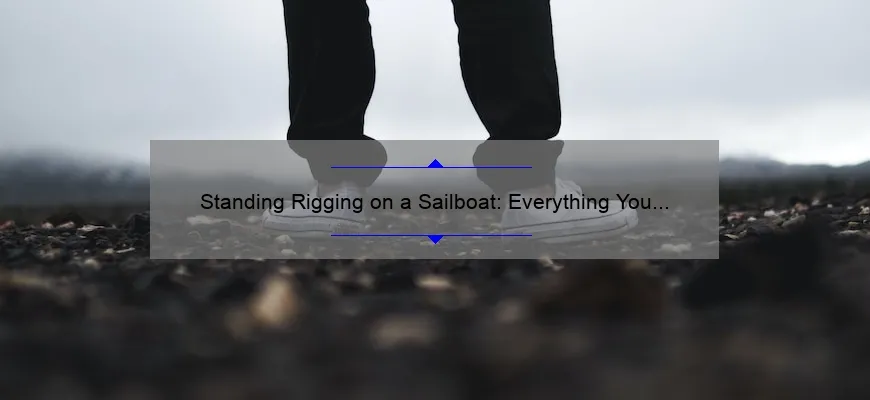
Short answer standing rigging on a sailboat:
Standing rigging on a sailboat refers to fixed lines and cables that support the mast and help control its movement. It includes components like shrouds, stays, and forestays. These essential elements ensure stability and proper sail trim while underway.
Understanding the Importance of Standing Rigging on a Sailboat
Sailboats are marvels of engineering and ingenuity, capable of harnessing the power of the wind to transport us across vast oceans and explore far-flung destinations. As sailors, we often focus on the majestic sails, sleek hull designs, and cutting-edge navigation technology that make these vessels so awe-inspiring. However, there is one crucial component that sometimes goes unnoticed but plays a vital role in keeping our sailboats safe and seaworthy – the standing rigging.
The standing rigging refers to the network of wires and cables that support the mast and allow it to bear the tremendous loads exerted by the sails. It acts as the backbone of a sailboat’s rig , providing stability, strength, and balance. Understanding its importance is crucial for anyone who sets foot on a vessel with dreams of cruising or competing.
Firstly, let’s examine why standing rigging is essential for sailboat safety. Imagine being out at sea when suddenly your mast collapses due to faulty rigging . This nightmare scenario can easily be avoided by regularly inspecting your boat’s standing rigging for signs of wear or fatigue. Frayed wires or corroded fittings could weaken the entire structure, making it susceptible to failure under heavy winds or rough seas . By ensuring your standing rigging is in good shape through routine maintenance and inspections by professionals, you can significantly reduce this risk and ensure your own safety onboard.
Moreover, properly tensioned standing rigging is vital for maintaining optimum sailing performance. The tension in each wire within the standing rig allows for efficient transfer of power from sails to keel through mast compression. If your standing rigging is too loose or too tight, it can negatively impact your sail trim and overall boat handling capabilities. A well-tuned rig will provide better control over sail shape adjustments necessary for different wind conditions while maximizing speed potential – something every sailor strives for!
Beyond safety and performance, understanding the importance of standing rigging requires recognizing its impact on the overall balance of your sailboat. The rigging plays a crucial role in maintaining the boat’s equilibrium by counteracting the forces exerted by the sails. Without proper tension and alignment of the standing rig, a sailboat may become unbalanced, resulting in compromised stability. This imbalance can make steering more challenging, increase the risk of broaching, or even lead to capsizing in extreme cases. Therefore, paying close attention to your standing rigging ensures that your boat remains stable and enjoyable to sail.
Lastly, it is worth mentioning that investing in high-quality materials and professional rigging services will prove cost-effective in the long run . While it may be tempting to cut corners or delay necessary upgrades or maintenance, neglecting your standing rigging will only result in more significant expenses down the line. Inadequate rig tension can lead to excessive wear on other components such as sails or mast fittings, increasing their replacement frequency and cost.
In conclusion, understanding and valuing the importance of standing rigging on a sailboat is essential for sailors of all levels. It directly impacts safety at sea, enhances sailing performance, maintains balance and stability, ultimately contributing to an enjoyable experience on board. So next time you set foot on a sailboat or contemplate owning one yourself, don’t forget to give due attention to this often overlooked but vital aspect – your boat’s standing rigging!
Step-by-Step Guide: How to Inspect and Maintain Standing Rigging on a Sailboat
Title: Cracking the Code: A Step-by-Step Guide to Inspecting and Maintaining Standing Rigging on a Sailboat
Introduction: Ahoy, fellow sailors! Whether you’re an experienced seafarer or a sailing enthusiast ready to cast off, understanding how to inspect and maintain your sailboat’s standing rigging is crucial for smooth voyages on the high seas. In this detailed guide, we will unravel the mysteries of standing rigging examination and upkeep, enabling you to confidently navigate through any sailing adventure. So hoist your mainsail, secure your halyards, and let’s dive into the world of rigging maintenance !
1. Understanding Standing Rigging: Before we embark on our inspection journey, let’s clarify what exactly constitutes standing rigging. Embracing technical jargon like professionals often do, this refers to those sturdy wire cables that provide support to the mast and keep everything in place as your vessel slices through the waves. These cables are under constant stress from wind pressure and oceanic forces; therefore, routine inspections are vital.
2. Assemble Your Inspection Arsenal: Essential tools at hand? Check! Embark upon your quest equipped with binoculars (to assess hard-to-reach areas), a multimeter (for electrical testing), tape measure (we love accuracy!), a notepad (to document findings), lubricant spray can (to combat rust), and some good ol’ elbow grease.
3. Visual Inspection Bonanza: Begin by examining every component of your standing rigging thoroughly. Start from bow to stern – nothing should elude your gaze! Look out for signs of fraying wires, corrosion spots – identified by those elusive green spots -, improperly tightened connections or turnbuckles hanging loose like unfortunate pirate hooks. Pay close attention when checking shrouds and stays around their terminal points.
4. Tension Testing Zen: Employing a multimeter capable of measuring tension is vital for this next step. Like tuning an instrument, each cable must be correctly tensioned to ensure optimal performance . Begin at the base of your mast, working your way up one stay or shroud after another, carefully noting the readings. Adjust tensions as needed, using the manufacturer’s guidelines as your North Star.
5. Get Into Detailing Mode: To maintain a seaworthy craft, meticulousness is key! Start by cleaning every inch of standing rigging with fresh water and mild soap to rid it of salt crystals and other corrosive agents that Mother Nature throws our way. Once dry, inspect terminals for any hidden corrosion potential. Remember to apply lubrication around all fittings where metal meets metal – preserving their longevity on this salty adventure.
6. Diving into DIY Replacements: Sometimes, despite our best efforts, some elements may need replacement eventually. Worn-out or damaged fittings demand immediate action! While there are professionals who can lend a helping hand, attempting minor repairs yourself allows you to save time and money in the long run. Just remember safety first – secure your vessel properly before venturing aloft!
7. Periodic Inspections are Pathway to Peace: As the seasons go by and maritime miles accumulate beneath your hull’s keel, remember that rigging inspections should become regular occurrences in your life as a sailor. Incorporating these tasks into your annual maintenance routine will keep you up-to-date on the health of your standing rigging and reduce unexpected surprises during those thrilling offshore adventures.
Conclusion: With this comprehensive guide in tow, inspecting and maintaining standing rigging on a sailboat will no longer bewilder even the most landlocked soul. Armed with knowledge and armed-still-with tools-of-the-trade in hand – embark upon every voyage knowing that smooth sailing is within reach! Remember comrades: vigilance coupled with clever maintenance ensures many marvelous voyages atop Neptune’s watery kingdom!
The Key Components of Standing Rigging on a Sailboat Explained
When it comes to sailing, understanding the key components of standing rigging is crucial. This system of cables and wires plays a vital role in keeping a sailboat’s mast upright and ensuring the safety of everyone on board. So, let’s dive into these essential elements to unravel their importance and how they work together seamlessly.
1. Mast: The mast, often referred to as the backbone of a sailboat, is a tall vertical structure that supports the sails. It provides stability and acts as an attachment point for various components of the standing rigging.
2. Shrouds: Shrouds are strong steel or synthetic cables that extend from the top of the mast down to its sides, creating lateral support. Usually arranged in pairs, they help prevent excessive side-to-side movement and maintain proper alignment while under sail or at anchor .
3. Forestay: Situated at the front of the mast, directly opposite to where you stand while steering, is the forestay. This forward-facing cable keeps the mast from tipping backward due to wind pressure against the sails when sailing upwind. It ensures that your sailboat remains balanced even in gusty conditions.
4. Backstay: The backstay is another essential component that counterbalances the force exerted by the forestay on your sailboat’s mast when sailing upwind or under heavy loads. Most commonly attached at or near the highest part of your boat ‘s stern (aft end), this cable prevents undue bending or breaking caused by fore-aft pressure.
5. Tangs and Turnbuckles: These small yet mighty components connect shrouds and stays to both the hull and mast with ease and allow for easy adjustment and fine-tuning of tensioning within your standing rigging system. Tangs are fittings attached directly to masts or other structural components using bolts or screws, while turnbuckles provide threaded connections allowing for precise adjustments.
6. Spreaders: Installed horizontally on either side of the mast, spreaders play a crucial role in maintaining the integrity and proper angle of shrouds. They prevent excessive bending or twisting forces by creating a wider stance for the shrouds, ensuring even stress distribution.
7. Standing Rigging Lifelines: These lines, typically made of stainless steel wires or synthetic materials like Dyneema, serve as an additional safety measure by helping to prevent crew members from falling overboard while working on deck. Strategically placed along the sides of the sailboat, they offer stability and support during maneuvering or rough seas.
Understanding these key components is vital not only for sailboat owners but also for anyone interested in sailing . Proper maintenance and routine inspections are essential to ensure optimal performance and mitigate any risks associated with deficiencies within your standing rigging system.
So next time you set sail or find yourself gazing out at a beautifully rigged sailboat, take a moment to appreciate the intricate balance and coordination that these key components provide. It’s truly a remarkable collaboration between technology, engineering, and Mother Nature herself – allowing us to glide through the waves with grace and elegance.
Common FAQs about Standing Rigging on a Sailboats Answered
Introduction: Standing rigging is an essential component of sailboats, playing a crucial role in supporting the mast and ensuring optimal performance on the water. However, many sailors are often perplexed by various aspects of standing rigging, leading to a multitude of frequently asked questions. In this comprehensive blog post, we aim to answer some of the most common FAQs about standing rigging on sailboats, providing detailed and professional insights while adding a touch of wit and cleverness.
1. What exactly is standing rigging? Ah, standing rigging – the unsung hero of every sailboat! Standing rigging refers to all the fixed elements that support the mast in an upright position. These elements typically comprise stainless steel wires called shrouds and stays along with associated fittings like turnbuckles and tangs. Think of it as the sturdy backbone that keeps your mast from taking an inconvenient swim!
2. When should I inspect my standing rigging? Regular inspections are crucial for maintaining a safe sailing experience. We recommend inspecting your standing rigging at least once a year or before embarking on any long voyage. Additionally, keep an eye out for any signs indicating potential problems such as excessive rust, wire deformation, or frayed cables. Remember: It’s better to be safe on land than sorry at sea !
3. How do I know when it’s time to replace my standing rigging? While rigorous inspections can highlight any potential issues, there are certain indicators that suggest your standing rigging might need replacement sooner than later:
a) Age: As a general rule of thumb, consider replacing your standing rigging after 10-15 years. b) Visible damage: If you spot visible signs of wear and tear like broken strands or corroded fittings, it’s time for new gear. c) Elongation: In some cases, constant strain can cause wire elongation over time – if this exceeds manufacturer recommendations or 5%, it’s replacement time. d) Performance decline: Have you noticed reduced boat performance or excessive mast movement? Outdated rigging may be the culprit.
4. Can I inspect and replace standing rigging myself? Inspecting your own standing rigging is indeed possible if you possess adequate knowledge and experience. However, replacing it yourself requires specific expertise, so unless you’re a seasoned sailor with professional background in rigging, we highly recommend entrusting this task to certified riggers who can ensure everything is done correctly. After all, your safety should never be compromised!
5. How much does standing rigging replacement cost? Ah, the golden question! While costs can vary depending on factors like the size of your boat, the material used for new rigging (stainless steel or synthetic fibers), and labor expenses – expect to invest anywhere from a few thousand to tens of thousands of dollars for a complete standing rigging replacement. Remember that proper maintenance upfront can help extend the lifespan of your rigging and save you some precious doubloons!
6. Can I switch from stainless steel to synthetic fibers for my standing rigging? Absolutely! Synthetic fiber alternatives like Dyneema® have gained popularity due to their lighter weight, high strength-to-weight ratio, and lower corrosion risk compared to stainless steel. These materials offer enhanced performance capabilities and are a valid consideration when upgrading or replacing your standing rigging system entirely.
7. What’s the typical lifespan of synthetic fiber standing rigging? While longevity depends on various factors such as usage patterns and environmental conditions, well-maintained synthetic fiber standing rigging systems generally last around 10-12 years before requiring replacement – comparable to their stainless steel counterparts.
Conclusion: Standing rigging on sailboats may seem mysterious at first glance, but by answering these common FAQs with informative yet witty explanations, we hope to shed light on this crucial sailing component while bringing a smile to our readers’ faces. Remember, understanding and properly maintaining your standing rigging will ensure safe and enjoyable voyages for years to come. So, stay rig-ready and sail on!
Upgrading Your Standing Rigging: What You Need to Know
In the world of sailing, upgrading your standing rigging is a vital decision that can greatly impact your vessel’s performance and overall safety. The standing rigging, which includes the various wires and cables that hold the mast upright, plays an essential role in ensuring stability and proper sail control. In this blog post, we will delve into everything you need to know about this crucial aspect of sailing.
Firstly, why should you consider upgrading your standing rigging? Over time, wear and tear can take a toll on this crucial component of your boat . Exposure to harsh weather conditions, continuous strain from strong winds or heavy sails, and even galvanic corrosion can all lead to the degradation of your rigging. As a responsible sailor, it is imperative to regularly assess the condition of your standing rigging and determine when an upgrade is necessary.
When it comes to upgrading your standing rigging, there are several key factors you need to consider. One essential aspect is choosing the right materials for your new rigging. Traditionally, stainless steel has been widely used due to its durability and strength. However, recent advancements in composite materials have opened up new possibilities for sailors. High-tech fibers like carbon or aramid offer impressive strength-to-weight ratios while being less susceptible to corrosion than steel.
It is important to consult with an experienced rigger or marine engineer who can guide you in selecting the most suitable material for your specific sailing activities and vessel type. They will take into account factors such as boat size, intended use (racing or cruising), budget constraints, and local climate conditions before recommending the best material for your standing rigging upgrade.
Another crucial consideration in upgrading your standing rigging is determining whether you want to switch from wire rope-based rigging to rod-based systems or composite products. Rods are known for their superior stiffness and excellent fatigue resistance but may require specialized equipment for assembly and maintenance. Composite systems typically combine carbon fiber or fiberglass with a resin matrix, offering versatility and customization options.
Furthermore, when planning to upgrade your standing rigging, it’s essential to conduct a thorough inspection of the mast and fittings. Any signs of wear and tear, cracks, or deformations in the mast or associated hardware should not be overlooked. Reinforcing these components may be necessary before installing new rigging to ensure optimal safety and performance .
During the installation process itself, meticulous attention to detail is crucial. Proper tensioning and alignment of the rigging are vital for achieving optimal sailing performance . Consulting with professionals in the field will ensure that you avoid common pitfalls such as over-tensioning or under-tensioning your rigging, which can potentially compromise its strength and longevity.
Upgrading your standing rigging not only ensures a safer sailing experience but also presents an opportunity to enhance your vessel’s performance capabilities. By optimizing sail control and reducing overall weight aloft, you can achieve faster speeds and improved maneuverability on the water.
In conclusion, upgrading your standing rigging is an investment that should never be taken lightly. It requires careful consideration of multiple factors such as materials, boat specifications, and local conditions. Seeking expert advice throughout this process will help you make informed decisions that align with your sailing goals while ensuring maximum safety and enjoyment on the open seas . So don’t hesitate – take charge of your vessel’s integrity today by embarking on an exhilarating upgrade journey!
Troubleshooting Common Issues with Standing Rigging on a Sailboat
Title: Navigating the High Seas of Standing Rigging: Deconstructing Common Sailboat Troubles
Introduction: Setting sail on a beautiful day, wind in your hair, and salt in the air – there’s nothing quite like the freedom of sailing. But as any experienced sailor knows, with great freedom comes great responsibility; one must always be prepared to tackle common issues that can arise with standing rigging on a sailboat. In this comprehensive guide, we’ll be your navigational chart through the murky waters of troubleshooting these problems.
1. The Tale of Loose Wires: Picture this: you’re out at sea, enjoying the blissful embrace of nature when suddenly you notice an unsettling amount of slack in your boat’s rigging wires. As panic sets in, take a deep breath and remember that loose wires are not an uncommon predicament. Before jumping ship into despair, consider inspecting your turnbuckles for any signs of wear or corrosion. Often, a simple tightening or lubing can solve the issue and restore equilibrium to your rigging system.
2. Strange Groans from Your Mast: As the wind howls through your sails, does it feel like someone is playing an eerie tune on your mast? Fear not! These disconcerting noises can typically be traced back to halyards rubbing against sheaves or pulleys. Be diligent about inspecting these components and ensuring they are properly aligned and lubricated.
3. The Mystery of Shaky Connections: Imagine cruising along peacefully when you notice unsettling vibrations emanating from various connections within your standing rigging system – another nuisance faced by many sailors. Remember to check bolts and fittings for tightness and wear regularly; sometimes a mere tightening can spare you from enduring an inconvenient wobble during every voyage.
4. Elusive Corrosion Castaways: While corrosion may seem like a mythical creature lurking under layers of saltwater incantations, it sadly isn’t. The corrosive effects of the marine environment can take their toll on your rigging, leading to weakened and compromised wires. To avoid this encroaching villain, regularly inspect your rigging for signs of corrosion, paying extra attention to any dissimilar metals in contact with each other. When identified early, you can tackle this issue head-on through diligent cleaning and application of protective coatings.
5. That Perplexing Sag: No one wants a saggy rig! If you notice an unacceptable amount of slack or downward curve in your wire stays or shrouds when under load, it’s time to put on your problem-solving hat. Begin by ensuring that all turnbuckles are suitably tensioned and that the mast rake is properly adjusted. A little fine-tuning may be all it takes to regain the tautness required for smooth sailing .
6. Stay Seals Against Abrasion: Do you find your stay seals battling against wear and tear? It might be time to beef up their defenses! Insulate vulnerable areas with appropriately sized rubber tubing or durable tape like self-amalgamating tape. This extra layer of protection will help prevent damage from chafing lines or abrasive surfaces.
Conclusion: As sailboat enthusiasts know, standing rigging issues can arise unexpectedly and interrupt even the most idyllic voyages at sea. By keeping these troubleshooting considerations in mind while setting sail , you’ll have a handy compass to lead you through the challenges that come with maintaining a well-maintained rig. So next time the wind whispers trouble into your ears while adrift on your beautiful vessel, fear not – armed with knowledge and wit, you’ll conquer those common issues with ease and go back to enjoying the sublime freedom provided by sailing adventures!
Recent Posts

- Sailboat Gear and Equipment
- Sailboat Lifestyle
- Sailboat Maintenance
- Sailboat Racing
- Sailboat Tips and Tricks
- Sailboat Types
- Sailing Adventures
- Sailing Destinations
- Sailing Safety
- Sailing Techniques
- New Sailboats
- Sailboats 21-30ft
- Sailboats 31-35ft
- Sailboats 36-40ft
- Sailboats Over 40ft
- Sailboats Under 21feet
- used_sailboats
- Apps and Computer Programs
- Communications
- Fishfinders
- Handheld Electronics
- Plotters MFDS Rradar
- Wind, Speed & Depth Instruments
- Anchoring Mooring
- Running Rigging
- Sails Canvas
- Standing Rigging
- Diesel Engines
- Off Grid Energy
- Cleaning Waxing
- DIY Projects
- Repair, Tools & Materials
- Spare Parts
- Tools & Gadgets
- Cabin Comfort
- Ventilation
- Footwear Apparel
- Foul Weather Gear
- Mailport & PS Advisor
- Inside Practical Sailor Blog
- Activate My Web Access
- Reset Password
- Customer Service

- Free Newsletter

Island Packet 350 Used Boat Review
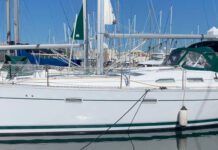
Beneteau 393 Used Boat Review

The PDQ 32 Cruising Cat Used Boat Review

Dufour 44 Used Boat Review

How to Create a Bullet-Proof VHF/SSB Backup

Tips From A First “Sail” on the ICW

Tillerpilot Tips and Safety Cautions

Best Crimpers and Strippers for Fixing Marine Electrical Connectors

Superlight Anchors: Not Just for Racers

Refining Furling Line Fairleads
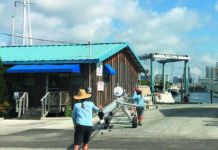
Revive Your Mast Like a Pro
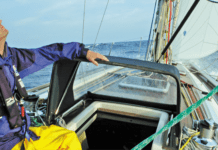
Solving the Dodger Dilemma

Diesel-Electric Hybrids Vs. Electric: Sailing’s Auxiliary Power Future

Sailing Triteia: Budget Bluewater Cruising

How To Keep Pipe Fittings Dry: Sealant and Teflon Tape Tests

What’s The Best Bottom Paint?

Boat Hook and Fender Hacks
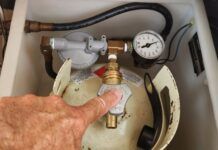
Propane Leak: How to Detect, Locate and Fix

Product Hacks: Velcro, Bounce, Anti-Skid Mats and Pool Lights

Stopping Holding-tank Odors

Giving Bugs the Big Goodbye

Galley Gadgets for the Cruising Sailor

Cold Weather Clothes to Extend the Sailing Season

Five Best Gloves: Sailing and DIYing in All Weather


Sailing Gear for Kids

What’s the Best Sunscreen?

R. Tucker Thompson Tall Ship Youth Voyage

On Watch: This 60-Year-Old Hinckley Pilot 35 is Also a Working…

On Watch: America’s Cup

On Watch: All Eyes on Europe Sail Racing

Dear Readers
- Inside Practical Sailor
The DIY Solent Stay or Inner Forestay

Among the many rigging improvements I’m pondering for my Yankee 30 Opal the year ahead is installing a second forestay to allow more flexibility in my sail plan.
A few years ago we dove into this topic in a two-part series on headsails. Two articles discussed the advantages of retrofitting a sloop with an inner forestay so that a smaller headsail could be set in higher winds. In the first part, technical Editor Ralph Naranjo discussed the Solent stay. In the the second part if the series , sailmaker Butch Ulmer wrote about the advantages of an inner forestay or staysail stay.
A Solent stay is a stay that sets between the mast and the forestay. It connects to the mast at a point that is only slightly below the existing backstay, and meets on the deck only slightly abaft of the existing forestay. Under such an arrangement, the mast requires no additional support. The existing backstay provides adequate tension to counteract the loads of any sail that is set from the new stay. Because it requires no additional backstay support, a Solent stay is a slightly less expensive option than the more common staysail stay, and it offers many of the same advantages.
An staysail stay also sets between the mast and the forestay. As the name implies, a staysail stay is where you would set a staysail, although it is also commonly used for setting a storm jib. In this modification, the forestay joins to the mast much closer to the deck than the Solent stay, so that some support aft is needed, usually in the form of running backstays-backstays that can be tensioned when needed, and slacked out of the way when they are not required. The staysail stay meets at the deck further aft than the Solent stay, thus bringing the center of effort further aft, which is usually desirable in heavy weather.
Why add an additional stay? As we saw in part one of our report, a Solent sail or staysail stay resolves the difficulty in managing a boat in winds at the upper range of a roller-furling jib’s designed parameters (usually above around 30 knots). The failings of a roller-reefed headsail become especially apparent when trying to work to windward. Even the best-cut furling jib will not furl down to the same efficient shape of a sail designed to perform in higher winds. There is also the risk of the furling gear itself failing, or the jib unfurling to its full dimensions.
It is important to keep in mind that most coastal sailors don’t need to bother with either of these stays. If you a prudent near-shore sailor, a well-designed and constructed furling jib will usually serve just fine. Butch Ulmer’s report discussed several methods sailmakers use to improve the performance of the roller-furling headsail when reefed down. A padded foam luff, conservative sizing (so reducing the size of the furled sail), stiffer sail material, and more sophisticated construction can all help make the furled sail more efficient. However, several of the sailmakers we spoke with suggested that a second forestay would be a welcome addition aboard a boat that has aspirations for a long offshore cruise.
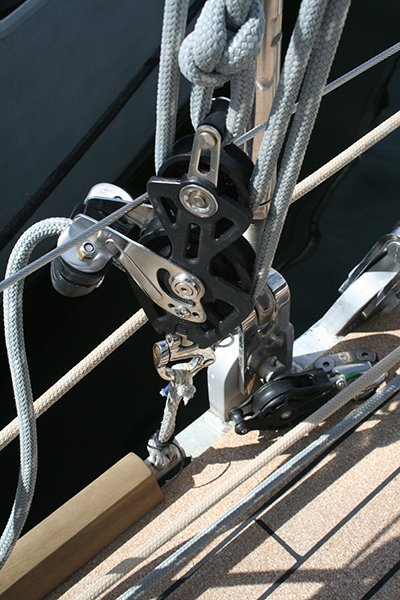
The most common question we were asked in the wake of our recent two-part series on headsails was, “How do I install an inner forestay or Solent stay?” Because either of these stays might one day be depended upon in the direst of circumstances, and because every boat presents different challenges for this project, it’s important to do your research and investigate other boats that have carried out this retrofit. Once you have a general idea of what features you like, consult a rigger for the initial design.
The rigger can also help you source the parts you need, and hopefully point out other details you might overlook, such as where to install the sheet leads, how to prevent corrosion of the new hardware, and what deck reinforcements might be required. If you are having a sail made for the new stay, then getting the sailmaker involved in the design will also help.
Once you have your measurements and hardware, you can carry out the installation, depending upon your ability. In some cases, you may need some fiberglassing skills, since the padeye/chainplate for the new stay must be adequately reinforced. Usually, fiberglass work can be avoided by transferring the load to the hull or a stout bulkhead, but as Brion Toss demonstrated in his recent article on the hidden causes of rig failure , this requires a general understanding of common installation errors and potential trouble spots.
For those who are considering an upgrade here are some other resources to consult as you begin your search.
- Don Casey’s This Old Boat Casey’s comprehensive book on upgrading an old sailboat dedicates several pages to adding an inner forestay. This comprehensive book is a must-have for anyone planning to turn a run-down sailboat into the pride of the marina. You can probably find a used copy on Amazon, but if you buy new from our bookstore , it helps support more Practical Sailor tests and special reports.
- PS Advisor Adding a Staysail Back in 1999, when former editor Dan Spurr was refitting his sloop Viva , he pitched this same question to naval architect Eric Sponberg, who offered some sage advice. This article also references three books that will be of help to anyone considering a retrofit, among the Understanding Rigs and Rigging by Richard Henderson.
- Whence Thou Comest, Highfield? We don’t know what was in the (former) editors water bottle when he came up with the headline for this test of quick releases for stays and shrouds back in 1999. After evaluating several devices, the test team concluded that ABI’s Highfield lever to be the best of the bunch. The company has since gone out of business, but the as the Rigging Company describes, three other worthy substitutes are now available. We routinely turn to the Rigging Company for advice on hardware and installations and its website has a section dedicated to installing an inner forestay that covers many of the hardware details, including devices for storing the inner forestay when not in use.
- Spar specialists Selden has a number of informative articles on rigging installation and maintenance. It offers step-by-step advice on installing an inner forestay fitting (nose tang) on the mast. For those who are dealing with a classic boat, fabricating their own chainplates or tangs, or simply enjoy digging into archaic, yet still valuable advice. Skene’s Elements of Yacht Design offers tips on calculating loads and fabricating hardware. It is still relevant enough to pick up from a used book store. Rig-Rite also offers a selection of staysail tangs.
- Rigger and sailmaker websites In addition to its discussion of stay releases the Rigging Company has additional information on adding a Solent stay. Brion Toss’s Spartalk discussion board (log-in required) has several threads dealing with inner forestays, Solent stays, and related hardware. Among them is Toss’s rant against the ABI forestay release . He prefers the babystay releases from Wichard (see page 9 of the catalog), available in wheel, ratchet, or lever designs, depending on the size of the boat. And sailmaker Joe Cooper describes a lightweight Solent stay retrofit using fiber instead of wire for the stay. (Because of unknowns regarding fiber stays, PS still prefers wire for this use.)
- Owner retrofits A number of blogs and archive articles from old magazines offer insight into what a retrofit entails. The Windrope family has done an excellent job documenting the addition of a Solent stay to Aeolus , their Gulf 32 Pilothouse sloop.
RELATED ARTICLES MORE FROM AUTHOR
On watch: this 60-year-old hinckley pilot 35 is also a working girl.
Dear Darrell,
A smaller headsail, or storm jib is indeed preferable to rolling up a Genoa when heading windward in winds over even 20 knots But adding it on as a retrofit brings up the issue of the lines to control it. Ideally it could be fitted on to a self-tacking rail, but these are quite awful if not installed in the original design, just one more thing to trip over and mess up a clean foredeck. I had researched this and apparently there are a number of simple solutions using a rigging set up based on the foot of the mast and clew of the jib, providing just one line astern through a deck organiser to the cockpit ‘piano’. This line simply controls how tight the jib will be and can be left alone when tacking upwind to act as self tacking jib. We sail in the Aegean where wind can be anything from ‘nothing’ to 35 knots sometimes with quick changes, so it pays to be adaptable. If you have any comments or recommendations for such rigs, it may well interest other readers as well and indeed myself as well.
I had a cutter, a Kelly Peterson 44. Great sailing cruiser. However, I would have rather have had a Solient over the traditional cutter. Not even including that yes, it required running back stays, the boat would balance better with a rolled jib over the staysail alone, even with double reefed main. Of course the set of the rollered 110 was not that great. A solient would have been my preference. Walter Cronkite had an interesting custom arrangement on his boat. He had his jib and solient on two stays separated an appropriate distance to properly function and both were on a yoke that would swivel. Just one attachment at masthead and one on stem. Of course hi-thrust bearings on both. The active sail would swivel aft when in use and the inactive would swivel forward complete out of the way! Clever arrangement. Yes, you would get a little “dirty” air from the inactive but everything is a trade off. Probably one that I would take if I could afford all that custom work.
I also have a cutter; CSY 44. When tacking, the jib would not come thru the innerforestay cleanly and would hang up. I installed a quick disconnect and when I know I will be beating it is set up that way. Makes it a lot easier to tack. I see hanging up as a problem with a the double forestay unless you carry the smaller sail on the most forward. However, is this where you want a storm jib? Should I need the storm jib, the staysail stay is the perfect place.
We had a custom rig built for our boat, a Valiant 40′ cutter with a bowsprit that sets the forestay two foot further forward. It was designed to allow both a Solent sail and/or a Staysail. We sail the boat as a Cutter and have no problem at all with the inner forestay interfering with the genoa and jib sheet, (just backwind the staysail until the clew of the genoa has moved to the leward side). The Staysail is roller-reefing too, and is small and very easy to handle, even in a blow. (don’t need the self-tending feature.) When in high winds, the furling staysail is perfect. As for the solent, I consider it more appropriate for a drifter, perhaps wing & wing with the genoa for downwind sailing.
Great Article, Darrell. Your advice to consult a rigger is spot on to address mast support issues. I helped deliver a beautiful Outbound to the Caribbean several years ago from New England. Once we turned south, the skipper set the hank-on Solent staysail on the inner stay. Sweet indeed. Easy to hoist and dowse. Nothing complex about a hank-on headsail. They go up and come down every time.
Interesting article, Darrell. Thank you. But my lord, does anybody proofread this stuff?
As I research adding a solent stay on our Tartan 27 I find many riggers are recommending a 4 to 1 purchase rather than a Highfield lever. They like the ability to adjust the tension at will. For our little sloop with a tabernackle the solent is much simpler and would remain stowed most of the time.
As a cutter sailor I must make a point of clarification. Installing an inner stay or staysail to your sloop design does NOT make it a cutter. A true feature of a cutter is that the mast is further aft than on a sloop in addition to the staysail feature. That is paramount to moving the center of effort further aft as the designer intended.
I have seen a number of cutter owners removing the staysail to sail the boat as a sloop simply because they don’t know how to sail it properly as a cutter. On the other hand, one unnamed circumnavigational sailor calls her boat a cutter when it is simply a sloop with inner stay…the manufacturer never made that boat design as a cutter. Last but not least one prominent cutter manufacturer offered their design as both a sloop and as a cutter; I called them to verify the fact that the mast was still in the original design location as a cutter. Can you begin to imagine what would be involved to design and build a sailboat with optional mast locations or even modify a sailboat from one rig location to the other?
LEAVE A REPLY Cancel reply
Log in to leave a comment
Latest Videos

Jeanneau’s New Rule Breaking Sailboat – Sun Odyssey 350 Boat Review

A Fiberglass Cleaning Boat Hack You Have To Try!

X Yachts X43 Sailboat Tour

Truth About Grease – Boat Maintenance Must Do Tips
Latest sailboat review.

- Privacy Policy
- Do Not Sell My Personal Information
- Online Account Activation
- Privacy Manager

- Maint & DIY
- Nav & Electronics
Table of Contents
Introduction to Stays and Shrouds
Stays and shrouds are critical components of a sailboat’s rigging system. Their primary function is to support the masts, ensuring the stability and overall balance of the vessel. Understanding their roles and differences is critical for proper maintenance, adjustment, and to ensure optimal performance.
Definition and Function
Stays are rigging lines that run fore and aft, connecting the mast to the boat’s bow (the front) and stern (the rear). Their primary function is to stabilize the mast against forward and backward movement. Shrouds, on the other hand, are rigging lines that run on either side of the mast, connecting it to the sides of the boat. Shrouds provide lateral (side-to-side) support, ensuring that the mast remains upright and stable.
Importance of Proper Tension
The tension on stays and shrouds can significantly impact your sailboat’s performance. Insufficient tension can lead to excessive mast movement, potentially causing damage to the rigging or the mast itself. Conversely, excessive tension can cause undue stress on the rigging components, leading to their premature wear or failure. Properly tuned stays and shrouds contribute to the boat’s overall stability, maneuverability, and sailing efficiency.
Tools and Materials Required
Before adjusting the tension on your sailboat’s stays and shrouds, it’s essential to have the necessary tools and materials at hand. This ensures the process is carried out efficiently and accurately.
Essential Tools
- Tension Gauge : A precision tool used to measure the tension in the rigging lines accurately.
- Wrenches and Pliers : Essential for making adjustments to turnbuckles and other fittings.
- Tape Measure : Useful for measuring the initial and adjusted lengths of the stays and shrouds.
- Rigger’s Tension Tool : A specialized device that allows for easy tension adjustments on shrouds and stays.
Required Materials
- Replacement Shrouds/Stays : If any component appears worn or damaged, replacement is necessary.
- Lubricant : For ensuring smooth operation of turnbuckles and reducing the risk of corrosion.
- Safety Gear : Gloves and safety glasses to protect yourself during the adjustment process.
Having the right tools and materials ensures you can carry out the adjustment process with precision and safety.
Steps to Adjust Tension on Stays
Adjusting the tension on stays requires a methodical approach to ensure that the mast is correctly balanced and secured. Here is a step-by-step guide to making these adjustments.
Step 1: Inspect the Rigging
Before making any adjustments, carefully inspect the rigging for any signs of wear, corrosion, or damage. Replace any compromised components to avoid potential failures during or after adjustment.
Step 2: Measure Initial Tension
Using a tension gauge, measure and record the initial tension of each stay. This provides a baseline for the adjustments. It’s crucial to have this reference as it helps you track progress and make more precise adjustments.
Step 3: Loosen the Backstay
Before adjusting the forestay, loosen the backstay slightly. This will reduce the forward tension on the mast, making the forestay adjustment more manageable.
Step 4: Adjust the Forestay
Using a wrench, tighten or loosen the turnbuckle on the forestay to achieve the desired tension. Frequently measure the tension with the tension gauge to avoid over-tightening or under-tightening.
Step 5: Adjust the Backstay
After the forestay is appropriately tensioned, proceed to adjust the backstay. Tighten or loosen the turnbuckle on the backstay, measuring the tension frequently to ensure it matches the desired specifications.
Step 6: Test for Mast Rake
Once both stays are adjusted, test the mast rake, which is the aft-leaning angle of the mast. This can be measured by hanging a weight from the main halyard and observing where it intersects with the boom. Adjust the stays further if necessary to achieve the desired rake.
Steps to Adjust Tension on Shrouds
Shrouds require careful adjustment to maintain the lateral stability of the mast. Follow these steps to adjust the shroud tension effectively.
Just as with the stays, begin by inspecting the shrouds for any signs of wear, corrosion, or damage. Replace any suspect components to ensure overall integrity.
Using the tension gauge, measure and record the initial tension of each shroud. This provides a reference point, making it easier to track adjustments.
Step 3: Initial Adjustments
Start with the lower shrouds. Use a wrench to adjust the turnbuckles, either tightening or loosening to bring the tension close to the desired levels. Frequently measure the tension to ensure accuracy.
Step 4: Adjust Upper Shrouds
Once the lower shrouds are properly tensioned, proceed to adjust the upper shrouds. As with the lower shrouds, use the turnbuckles to make adjustments, frequently measuring the tension.
Step 5: Check Mast Alignment
After adjusting both lower and upper shrouds, check the mast alignment. Ensure that the mast is straight and not leaning to one side. Use the tape measure to compare the tension on both sides, making minor adjustments as necessary.
Step 6: Recheck All Tensions
Once the mast is correctly aligned, recheck the tension on all shrouds and stays. Ensure that each is at the desired tension level, making final adjustments as necessary.
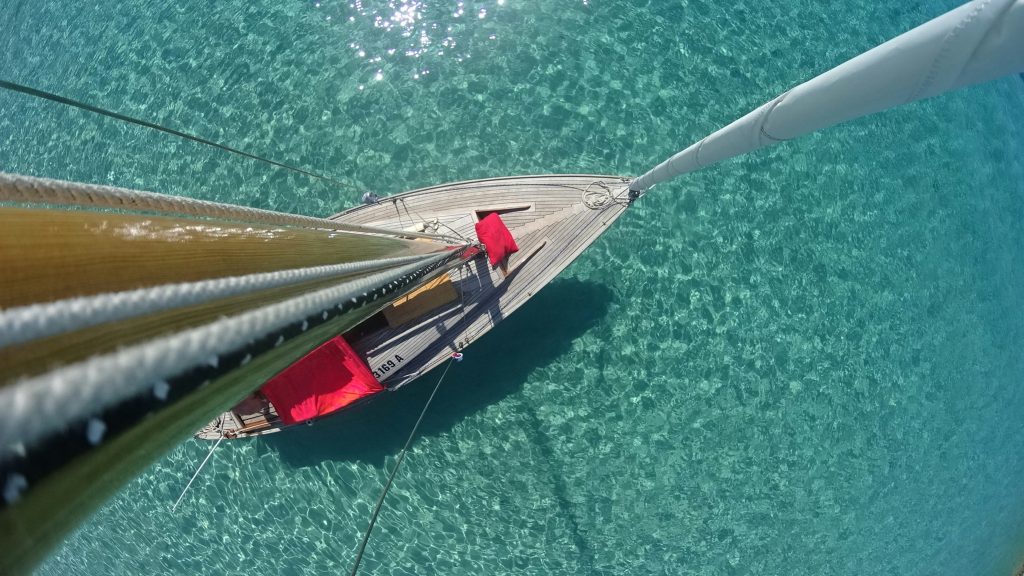
Balancing Rake and Bend
Adjusting the rake and bend of the mast can significantly impact your sailboat’s performance. Understanding how to balance these elements is critical for achieving optimal sailing conditions.
Understanding Mast Rake
Mast rake refers to the aft-leaning angle of the mast. Proper rake affects the boat’s helm balance and sail shape. Too much rake can cause excessive weather helm, while too little can result in a lack of responsiveness.
Adjusting Mast Bend
Mast bend refers to the curvature of the mast when viewed from the side. It helps control sail shape and performance in various wind conditions. Adjusting the mast bend involves fine-tuning both the forestay and the shrouds.
Balancing Act
Achieving the correct balance between mast rake and bend requires careful adjustments and testing. It’s essential to test your boat under actual sailing conditions to evaluate the impact of these adjustments and make further modifications as necessary.
Common Mistakes and How to Avoid Them
Adjusting the tension on stays and shrouds can be a complex process. Common mistakes can lead to suboptimal performance or even damage to your sailboat. Being aware of these pitfalls can help you avoid them.
Over-tightening or Under-tightening
One of the most common mistakes is over-tightening or under-tightening the stays and shrouds. Over-tightening can cause excessive stress on the rigging components, leading to premature wear or failure. Under-tightening can result in insufficient support, causing mast movement and potential damage.
Ignoring Mast Alignment
Failing to check and adjust mast alignment can lead to an imbalanced mast, adversely affecting the sailboat’s performance. Always ensure the mast is straight and correctly aligned after adjusting the tension on stays and shrouds.
Skipping Regular Inspections
Regular inspections of the rigging are crucial for identifying potential issues before they become significant problems. Skipping these inspections can lead to undetected wear and damage, compromising the sailboat’s safety and performance.
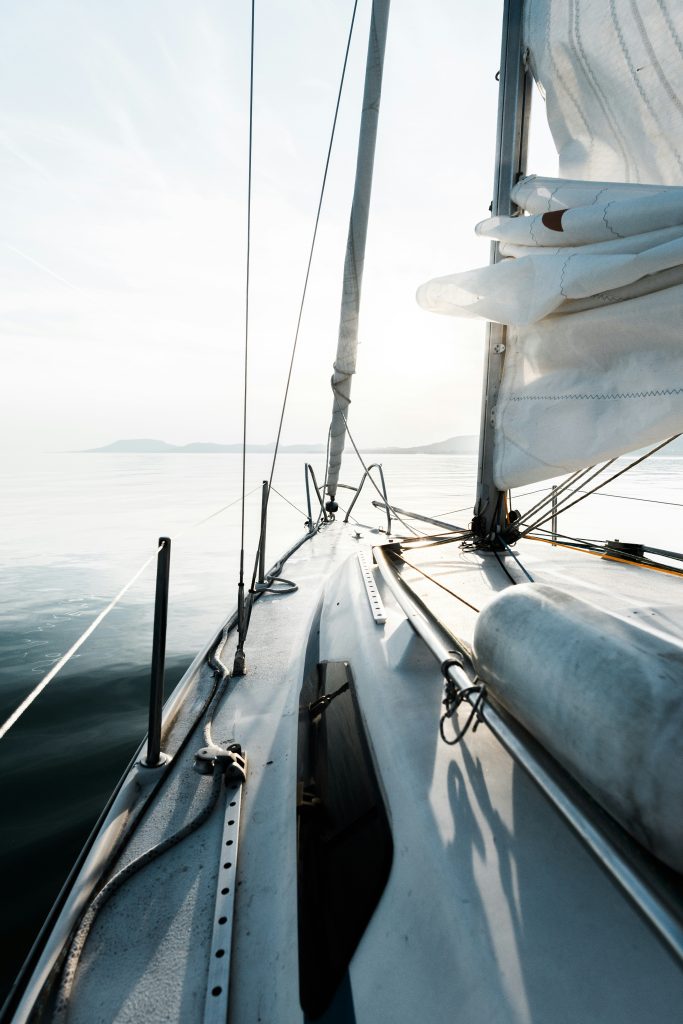
Maintaining Proper Rigging Tension
Once the tension on your stays and shrouds is correctly adjusted, maintaining this tension is vital for long-term performance and safety. Regular checks and maintenance can help preserve the rigging’s integrity.
Routine Inspections
Perform routine inspections of the rigging, checking for any signs of wear, corrosion, or damage. This includes examining the stays, shrouds, turnbuckles, and other rigging components. Regular inspections help identify and address potential issues before they become major problems.
Seasonal Adjustments
Changes in temperature and humidity can affect rigging tension. Make seasonal adjustments to ensure the stays and shrouds remain correctly tensioned throughout the year. For example, colder temperatures can cause the rigging to contract, requiring slight loosening, while warmer temperatures may cause expansion, necessitating slight tightening.
Proper Storage
When not in use, store your boat in a manner that reduces stress on the rigging. This includes using supports to relieve pressure from the mast and rigging components. Proper storage helps extend the lifespan of the rigging and reduces the need for frequent adjustments.
Advanced Techniques for Experienced Sailors
For seasoned sailors, advanced techniques can further optimize the tension on stays and shrouds, enhancing overall sailboat performance.
Tuning for Specific Conditions
Depending on the sailing conditions, you may need to adjust the tension on stays and shrouds differently. For example, in strong winds, slightly increasing tension can provide better sail performance and stability. Conversely, in lighter winds, reducing tension can improve sail shape and responsiveness.
Table: Tuning Adjustments for Various Conditions
| Condition | Adjustment | Rationale |
|---|---|---|
| Strong Winds | Increase Tension | Enhances stability and sail performance |
| Light Winds | Decrease Tension | Improves sail shape and responsiveness |
| Rough Seas | Balance Tension Evenly | Ensures overall stability and balance |
| Calm Seas | Fine-tune for Mast Bend | Optimizes sail shape for light conditions |
Utilizing Advanced Tools
Advanced tensioning tools and rigging guides can provide more precise measurements and adjustments. These tools can help achieve optimal tension levels more efficiently, especially for experienced sailors aiming for peak performance.
Professional Rigging Services
For complex adjustments or when dealing with high-performance sailboats, consider enlisting professional rigging services. Experienced riggers have the expertise and equipment to make precise adjustments, ensuring your sailboat performs at its best.

Understanding and adjusting the tension on stays and shrouds is a vital aspect of sailboat maintenance and performance. By meticulously following the steps and guidelines outlined, you can ensure your boat’s rigging is correctly tensioned, enhancing its stability, safety, and overall sailing experience. Regular inspections, routine maintenance, and advanced techniques for experienced sailors contribute significantly to the longevity and performance of your vessel’s rigging system.
Proper tension ensures not only the optimal functionality of your sailboat but also contributes to a safer and more enjoyable sailing experience. Emphasizing the importance of balanced adjustments, routine inspections, and the prudent use of tools and materials is essential in maintaining the mast’s structural integrity and overall performance.
Your investment in time and effort to understand and adjust the tension on stays and shrouds will undoubtedly pay off, providing you with a reliable, high-performing sailboat ready to tackle the varying conditions of the sea.
You Might Also Like
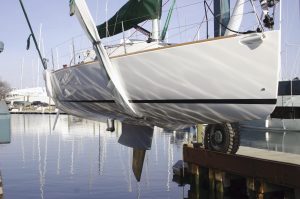
Shoal Draft Keel Basics
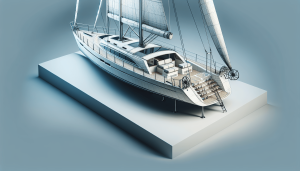
Essential Role of Mast Steps
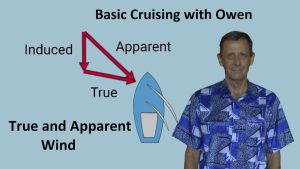
Comprehensive Overview: True Wind vs. Apparent Wind

Sail Whisperer is a website designed to help you make a more informed decision when buying sail components.
Connect with us.
Accessories Cloths Safety
- Maintenance & DIY
- Navigation & Electronics
- News & Updates
- Policy Privacy
- Affiliate Disclosure
- Terms of Use

IMAGES
VIDEO